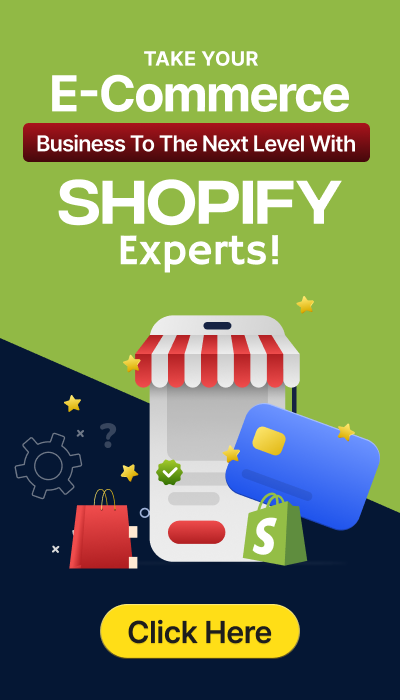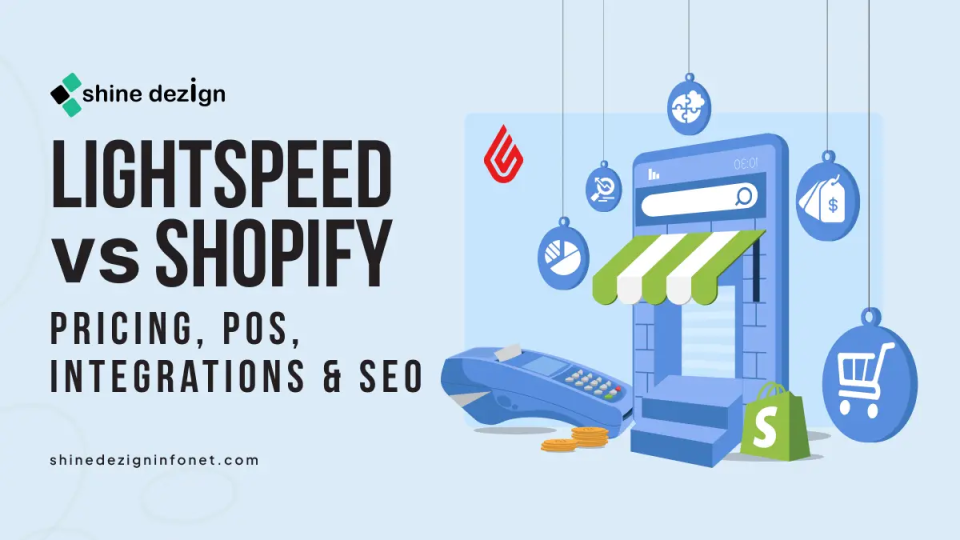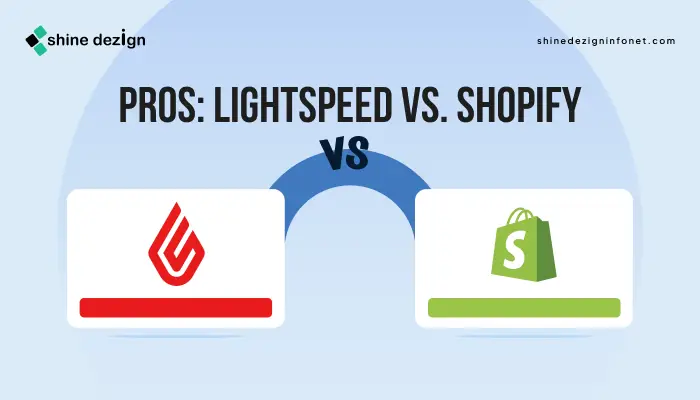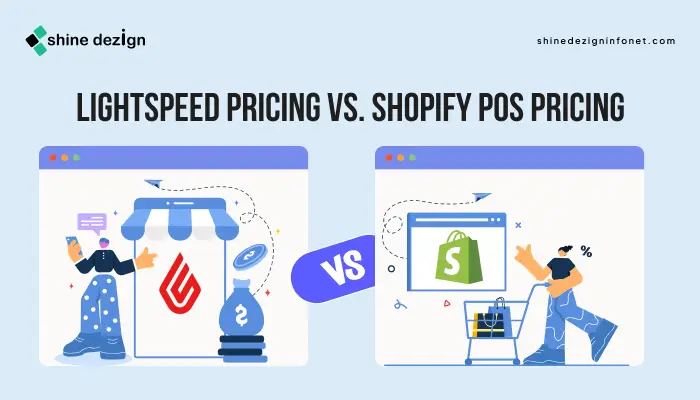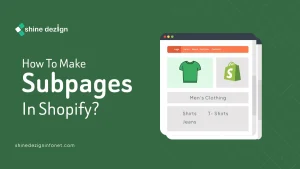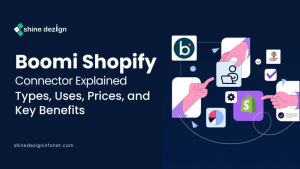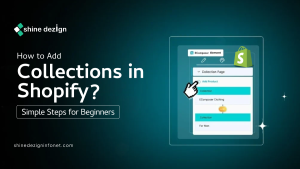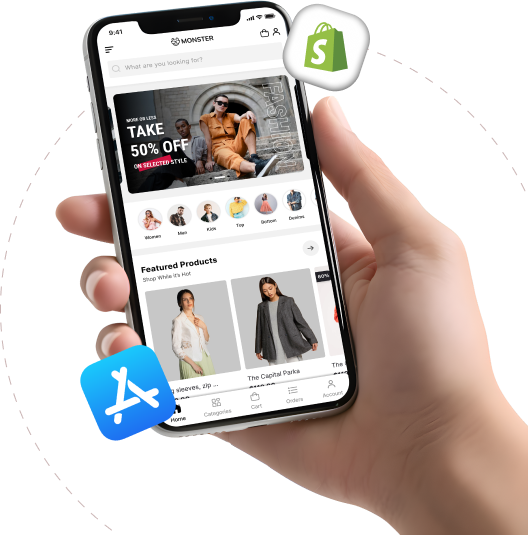Table of Contents
Picking the right point-of-sale (POS) system is crucial for streamlining operations, boosting sales, and scaling your business. Lightspeed vs Shopify: which one is best for retailers? Whether you are a small boutique owner or managing multiple locations, this guide breaks down Lightspeed POS vs Shopify. It includes Lightspeed pricing, features, pros/cons, and even Lightspeed Shopify integration options.
We will help you decide based on your needs, from e-commerce synergy to advanced inventory tools. By the end, you will know if Lightspeed’s robust analytics or Shopify’s seamless online focus is the better fit for your store.
What is Lightspeed?
Lightspeed is a user-friendly point-of-sale (POS) and payments platform built for retail and hospitality businesses. It combines sales, inventory, online selling, and analytics into one simple system. It powers over 144,000 locations in more than 100 countries, helping small shops. The big chains grow by making operations efficient and giving real-time insights. It’s like a smart business partner that boosts revenue and keeps things running smoothly, with expert support included.
Lightspeed also offers SEO tools to help your online store rank better in search engines, driving more organic traffic and sales. Plus, Lightspeed integration with Shopify allows retailers to combine Lightspeed’s powerful retail management with Shopify’s e-commerce platform, syncing inventory, orders, and customer data seamlessly for a true omnichannel experience.
What is Shopify POS?
Shopify POS is a flexible point-of-sale system that helps retailers sell in person, whether in a store, at a pop-up, or on the go. It’s part of the bigger Shopify platform, which is famous for e-commerce. It seamlessly connects your physical sales to online channels like websites and social media. From your first sale to running a full-scale operation, it powers businesses of all sizes with integrated hardware, software, and payments.
Available in nearly every country, it’s all about making things simple. Managing inventory, accepting payments anywhere, and creating loyal customers through options can be quite helpful. If you already have a Shopify store, it’s super easy to add POS for that unified experience.
Pros: Lightspeed vs. Shopify
Lightspeed Pros:
Super Scalable for Growth: It shines in handling multilocation setups, so if your business is expanding to new stores or even internationally, the tools for centralized inventory, multichannel sales, and unified reporting make it a breeze to keep everything in sync without chaos.
Intuitive and Fast to Use: The platform is built to be user-friendly right out of the gate, with blazing-fast workflows, customizable integrations, and reports that adapt to your specific needs. No more juggling multiple apps; it’s all streamlined in one dashboard.
Top-Notch Insights and Analytics: You get real-time data and performance-boosting reports that help you spot trends, optimize stock, and decide what to stock next. It’s like having a business advisor built in, giving visibility across your whole operation.
Seamless Payments and Inventory: Fully integrated payments mean transactions are quick and secure, and the inventory management is spot-on for avoiding overstocks or shortages, especially in multichannel scenarios.
Personalized, Expert Support: They offer white-glove onboarding and 24/7 help from folks who understand retail and hospitality challenges. It’s not generic chat support; it’s tailored advice to help you succeed.
Trusted Globally: With that huge user base, it’s battle-tested for real-world use, helping businesses increase revenue and staff satisfaction while scaling without headaches.
Shopify Pros:
Easy Integration with Online Sales: Syncs everything, like inventory, customers, and orders, between your store and website, so you avoid double work and offer cool options like buy online, pick up in-store.
Flexible for Any Size: Works great for single shops, multi-locations, or mobile events with wireless hardware; scales as you grow without major overhauls.
User-Friendly App: The mobile POS software is intuitive and fast, letting you check out customers anywhere on the floor or at markets, perfect for quick service.
Built-in Payments and Tools: Handles transactions smoothly with Shopify Payments (where available), plus back-office features for reports and inventory in one spot.
Global Reach and Reliability: Used by top brands worldwide; it’s reliable for daily ops and helps build customer loyalty with seamless experiences.
Strong Ecosystem: Ties into Shopify’s huge app store and support resources, like the Help Center and community, for easy customization.
Lightspeed Cons vs. Shopify Cons
LightSpeed Cons:
Can Get Pricey Quickly: The starting plans are around $109 per month per location, but add in hardware, transaction fees, and premium features like advanced analytics, and costs can stack up, especially for smaller shops or those with lots of locations. It’s more premium than budget options.
Learning Curve for Complex Setups: While it’s intuitive for basics, diving into multilocation tools or custom reports might take time if you are not tech-savvy. Onboarding helps, but some users say the initial setup feels overwhelming without dedicated IT help.
Internet Dependency: As a cloud-based system, it relies heavily on a stable connection. Offline mode exists but is limited, so spotty Wi-Fi in stores could disrupt sales during peak times.
Integration Hiccups Outside the Ecosystem: It plays nice with its own suite, but connecting to non-Lightspeed apps or niche tools can be clunky or require extra workarounds, leading to frustration for businesses with unique workflows.
Support Isn’t Always Instant: The 24/7 promise is great, but during busy periods, wait times for phone or in-depth help can stretch out, and it’s not as proactive for super-specific issues as some competitors.
Shopify Cons:
Extra Fees Add Up: Base plans start at $5 per month, but hardware costs can make it pricier, especially if you are not using Shopify Payments everywhere.
Limited Offline Capabilities: Relies on the internet for full features; offline mode is available, but basic, which may cause connectivity issues to slow you down in remote areas.
Hardware Costs and Compatibility: Official gear is convenient but expensive; third-party stuff might not integrate as smoothly.
Less Depth for Hospitality: Great for retail, but if you are in restaurants or services, it lacks built-in tools like table management, you will need add-on apps, which cost more.
Support Can Be Generic: 24/7 chat and email are there, but it’s not as hands-on or industry specific as some rivals; phone support is limited in some regions.
Lightspeed Pricing vs. Shopify POS Pricing
 Lightspeed Pricing
Lightspeed Pricing
| Plan | Pricing |
|---|---|
| Basic | $109/Month |
| Core | $179/Month |
| Plus | $339/Month |
Shopify POS Pricing
| Plan | Pricing |
|---|---|
| Starter | $5/Month |
| Retail | $89/Month |
Comparison Table: Lightspeed vs. Shopify
| Aspects/Features | Lightspeed Retail | Shopify POS |
|---|---|---|
| Starting Price | $109/month (Basic plan, per location); scales to $339/month (Plus). Transaction fees ~2.6% + $0.10. Hardware extra. | $5/month (Starter); $89/month (Retail/Pro per location). Ties to e-com plans ($29+). Shopify Payments: 2.9% + $0.30 (lower in-store). Hardware from $49. |
| Best For | Multi-location retail/hospitality with advanced inventory and analytics needs. | Online-first retailers blending e-com and in-store; startups or mobile sellers. |
| Scalability | Excellent for unlimited locations; real-time cross-location inventory, transfers, and reporting. Ideal for growth. | Flexible for single/multi-locations; strong omnichannel but less depth in multi-store pricing/comparisons. |
| Inventory Management | Advanced: Multi-variant/composite products, purchase orders, supplier returns, NuORDER integration, mobile scanning. | Solid: Demand forecasting, transfers, low-stock alerts; Stocky app for Pro users. Unlimited products/variants. |
| E-commerce/Omnichannel | Built-in eCom module; supports marketplaces/social; click-and-collect, local delivery. Lightspeed Shopify integration via API/apps. | Seamless native integration; buy online/pickup in-store, ship from store, QR codes. Vast app store for social/marketplaces. |
| Payments | Integrated: Cards, BNPL, split payments, tipping. PCI-compliant; low rates by volume; 60 days free processing. | Shopify Payments built-in: Cards/wallets, installments, quick payouts. Transparent rates; chargeback tools. |
| Analytics/Reporting | Deep: Dashboard, employee/product/channel performance, scheduled exports, replenishment forecasts. Mobile app updates. | Good: Daily sales, cash flow, product reports; customizable dashboard. Advanced via apps (Grow+ plans). |
| Customer/Marketing Tools | Profiles, segmentation, tiered loyalty (coming soon), email/SMS, Google reviews, automated campaigns. | Profiles, opt-ins, segmentation, email marketing; Shop app integration for 150M+ users. Loyalty via apps. |
| Staff Management | Unlimited users, role-based permissions, PINs, commissions, performance reports. | Unlimited staff, roles/PINs, approvals, commissions. Simpler but effective. |
| Hardware | Flexible: iOS/Android/Windows; compatible with Epson/Star printers, Honeywell/Zebra scanners, Star drawers, Dymo labels. | Proprietary: POS Terminal kit, Tap & Chip reader, Tap to Pay (iPhone). Accessories compatible; 1–2 year warranty. |
| Integrations | Strong API; accounting (Xero/Quickbooks), ERP, eCom (Shopify/BigCommerce), marketing, workforce. Lightspeed Shopify integration easy for hybrid setups. | Huge app ecosystem (6,000+); accounting, marketing, ERP. Native for Shopify tools; Lightspeed integration via apps/API. |
| Support | 24/7 local chat/email/phone; dedicated manager, onboarding. Offline mode available. | 24/7 chat/email; Help Center/community. Phone limited; more self-service. |
What to Choose and Why: Lightspeed vs. Shopify?
Choose Lightspeed if,
- If you are a growing multi-location retailer.
- Requires real-time inventory transfers, supplier management (NuORDER), and deep analytics.
- Prefer scalable reporting avoid chaos.
- Wants location-specific pricing and employee attribution improve efficiency.
Choose Shopify POS if,
- If you are an online-first seller.
- Prioritizes e-commerce sync, like buy-online-pickup-in-store or social selling.
- Wants affordable ($5/month Starter) and app-rich for beginners; built-in payments skip extra fees.
Hybrid Option: Lightspeed and Shopify Together
- Use Lightspeed Shopify integration (API/apps) if you want Shopify e-commerce features along with Lightspeed in-store ops.
- It combines strengths for omnichannel without migration.
- Also, it handles online sales on Shopify, with retail depth on Lightspeed.
Conclusion
In the Lightspeed vs Shopify comparison, both are powerhouse POS systems for retailers, but they cater to different needs. Lightspeed excels in scalable, analytics-heavy operations for multi-location growth, with premium features justifying its higher pricing.
Shopify POS, meanwhile, democratizes retail with affordable, e-com-centric tools that make omnichannel selling a breeze, especially if you are already in their ecosystem. Whether prioritizing Lightspeed’s expert support and inventory intelligence or Shopify’s flexibility and app variety (including seamless Lightspeed Shopify integration).
Whether you prioritize Lightspeed’s inventory intelligence and personalized support or Shopify’s flexibility, app variety, and custom Shopify development services, the best choice depends on your business goals.
